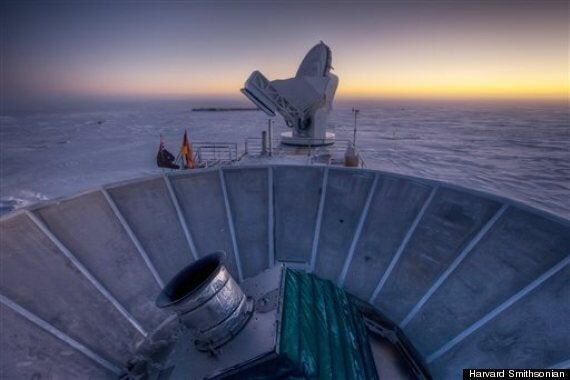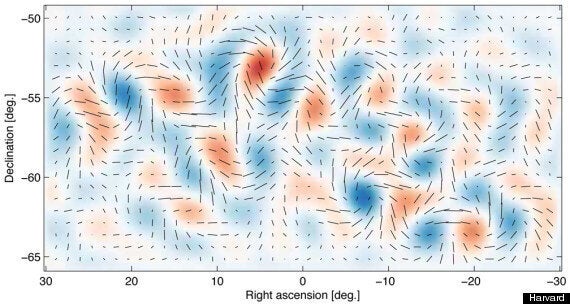An echo of the universe's cataclysmic birth has been detected by scientists in a landmark discovery described as the "Holy Grail" of cosmology.
British physicists have called it the most significant finding in cosmological science in "years".
If confirmed, the findings are likely to win the team a Nobel prize for physics.
Ripples in the fabric of space itself known as gravitational waves were identified by a specially designed telescope at the south pole.
Like a cosmic tsunami, they were generated when the universe suddenly exploded into existence almost 14 billion years ago.
Scientists believe the cosmos expanded at an enormous rate - faster than the speed of light - in the first tiny fraction of a second after the Big Bang.
The theory, called "inflation", was dreamed up to explain why the universe today is so remarkably uniform.
READ MORE: The Full Paper Available To Download
The announcement from the Harvard-Smithsonian Center for Astrophysics in the US provides the first direct "smoking gun" evidence of inflation.

Above: the BICEP2 telescope in the Antarctic where the key observations were made
It also challenges scientists to grapple with a new mystery, because no-one can yet explain how inflation happened.
The signal detected by the BICEP2 (Background Imaging of Cosmic Extragalactic Polarazation) telescope is much stronger than expected.
"This has been like looking for a needle in a haystack, but instead we found a crowbar," said team co-leader Dr Clem Pryke, from the University of Minnesota.
Rumours about the discovery had been rife in the world of astrophysics. To make sure they got it right, the scientists analysed their data for more than three years before making it public.
British expert Dr Ed Daw, from the University of Sheffield, said: "Gravitational waves emitted at the time of the big bang can tell us how the universe came to exist.
"If these results prove correct, we will have new key information on the very early Universe, information that is hard to get from any other source."
Gravitational waves were predicted in Albert Einstein's General Theory of Relativity. Their potential sources include super-dense neutron stars and black holes, as well as the Big Bang. However, until now they have never been seen directly.

Above: BICEP2 looked for an imprint of primordial gravitational waves in the cosmic microwave background (CMB), a faint radiation afterglow left over from when the universe was just 400,000 years old.
"Our team hunted for a special type of polarization called 'B-modes' which represents a twisting or 'curl' pattern in the polarized orientations of the ancient light," said one of the lead scientists Professor Jamie Bock, from the California Institute of Technology.
The swirly B-mode pattern provided a unique gravitational wave signature.
"This is the first direct image of gravitational waves across the primordial sky," said team member Professor Chao-Lin Kuo, from Stanford University in California.
Astrophysicist Professor Avi Loeb, from Harvard University, said: "This work offers new insights into some of our most basic questions: Why do we exist? How did the universe begin? These results are not only a smoking gun for inflation, they also tell us when inflation took place and how powerful the process was."
BICEP2 was the second stage of the mission to detect gravitational waves.
The scientists travelled to the South Pole to take advantage of its cold, dry, stable air.
"The South Pole is the closest you can get to space and still be on the ground," said principal investigator Professor John Kovac, from the Harvard-Smithsonian Centre for Astrophysics.
"It's one of the driest and clearest locations on Earth, perfect for observing the faint microwaves from the Big Bang."
The scientists acknowledge that interaction between CMB and space dust could produce a similar effect as that produced by primordial gravitational waves. But they have made painstaking efforts to rule out such a possibility.